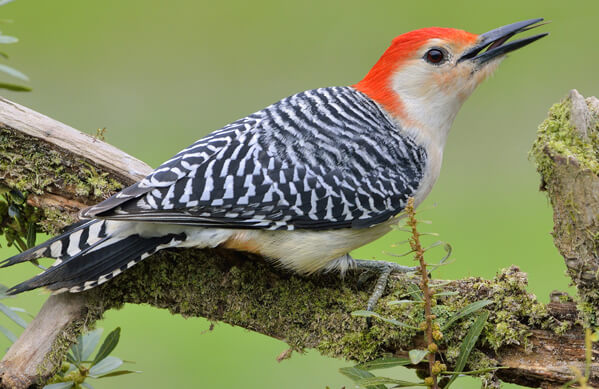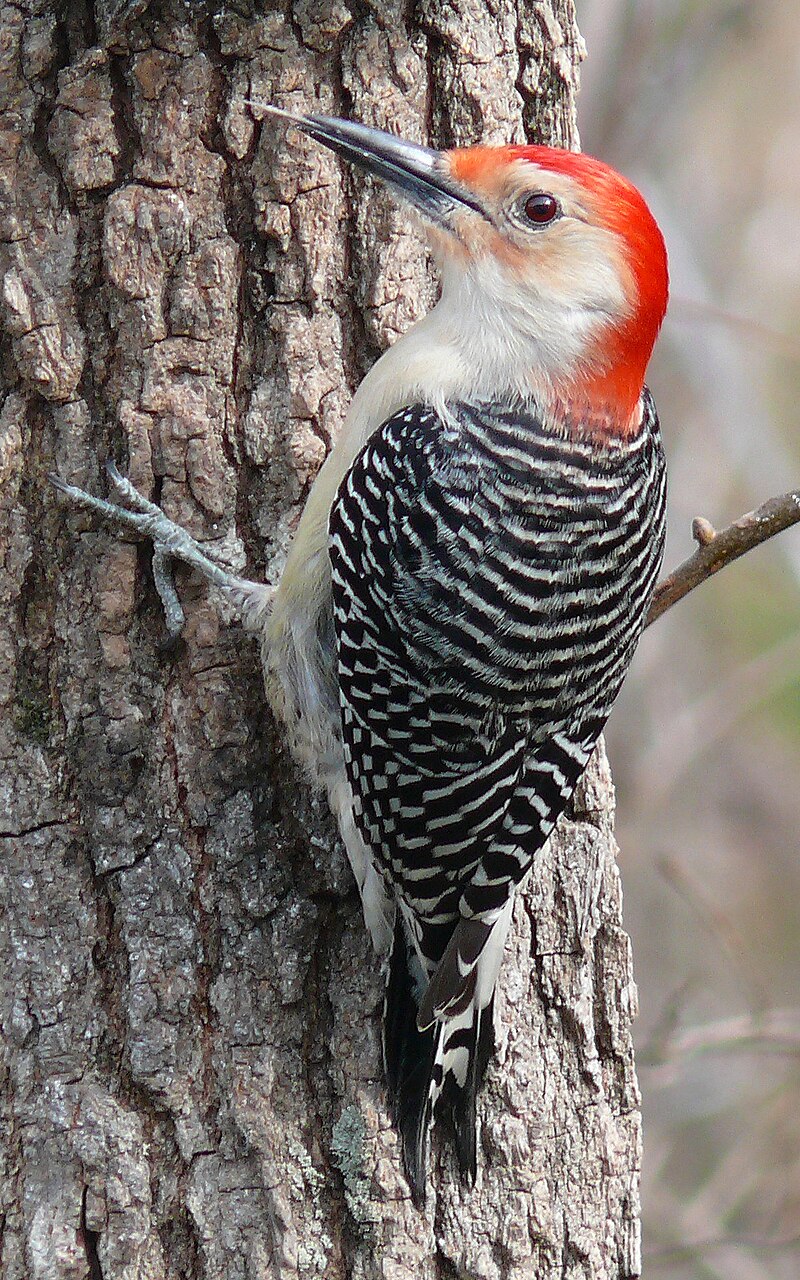Woodpeckers: A Comprehensive Guide to Recognizing These Unique Birds
Woodpeckers, with their distinct habits and physical characteristics, have long astounded the inquisitiveness of ornithologists and nature lovers alike. From their balanced drumming resembling with the woods to their amazing adjustments for scaling tree trunks with convenience, these birds present a fascinating research study in avian biology. Nevertheless, what genuinely sets woodpeckers apart is not just their striking appearance however also their essential duty in preserving the delicate balance of environments. As we check out the intricate makeup, diverse varieties, and environmental value of woodpeckers, a deeper admiration for these unique birds and the enigmas they hold unfolds.

Woodpeckers' Drumming Actions
Woodpeckers display a balanced and exact drumming actions that serves numerous essential functions in their day-to-days live. This habits is primarily connected with communication, region defense, and foraging. The distinctive drumming audio is produced by the rapid pecking of their beaks against tough surface areas such as tree trunks, branches, or perhaps metal items.
Interaction is a vital facet of woodpecker habits, and drumming plays a significant duty in this process. Woodpeckers make use of drumming to establish their existence, bring in mates, and keep call with their partners and children. The regularity, intensity, and duration of drumming sequences convey particular messages to various other woodpeckers in the location.
In addition to interaction, woodpeckers utilize drumming behavior for territory defense. Woodpeckers in Florida. The loud and repeated drumming offers as an advising to possible trespassers, signaling that the location is currently declared. By establishing their area with drumming, woodpeckers decrease the likelihood of problems over useful resources such as food and nesting sites
In addition, woodpeckers likewise employ drumming as a foraging strategy. The rhythmic pecking aids them locate pests hiding under the bark of trees by creating vibrations that disrupt the prey's cover-up. This behavior showcases the flexibility and resourcefulness of woodpeckers in using their drumming abilities for multiple vital functions.
Special Adaptations for Tree Climbing
Having mastered the art of drumming to connect, protect area, and forage, woodpeckers have advanced distinct adjustments that facilitate their impressive climbing abilities in their arboreal environments. One vital adjustment is their specialized feet. Woodpeckers have zygodactyl feet, with 2 toes pointing onward and 2 toes directing backward. This setup provides a strong grip on the vertical surface areas of trees, allowing them to cling effortlessly while foraging for insects or drumming. In addition, woodpeckers have tight tail feathers that work as a prop to sustain their bodies as they climb. These tail plumes supply stability and equilibrium, making it possible for woodpeckers to steer up tree trunks with accuracy and dexterity.
Furthermore, woodpeckers have effective neck muscles and an unique skull framework that aid in their climbing up capabilities. Their solid neck muscular tissues allow them to rapidly peck at tree bark without experiencing whiplash, while their thick skull and little brain serve as shock absorbers, securing them from the effect of repeated drumming. These adaptations jointly make it possible for woodpeckers to navigate the vertical world of trees with effectiveness and grace.

Function of Woodpeckers in Ecosystems
By foraging for insects under the bark of trees, woodpeckers aid regulate parasite populations, avoiding break outs that can hurt the general wellness of the forest. In addition, woodpeckers produce More Info tooth cavities in trees that serve as critical nesting websites for a range of various other bird types, promoting biodiversity within the ecosystem.
Furthermore, the drumming and articulations of woodpeckers play an important function in interaction and territory establishment. These noises not only serve to draw in companions yet likewise help specify boundaries in between various woodpecker territories, minimizing problems and promoting an unified conjunction within the forest area. In general, the presence of woodpeckers in forest communities highlights their relevance as keystone types, affecting the dynamics and functioning of these habitats in multifaceted ways.
Makeup: Specialized Beaks and Feet
In the elaborate web of woodland communities, the specialized beaks and feet of woodpeckers are vital adjustments that Website allow them to accomplish their essential ecological roles. Woodpeckers have unique physiological functions that are specifically developed to aid them in their foraging and nesting behaviors.
One of the most distinctive feature of woodpeckers is their strong, chisel-shaped beaks. These beaks are flawlessly adjusted for exploration into wood to reveal pests, larvae, and sap concealed underneath the bark of trees. The solid muscular tissues and sturdy framework of their beaks enable woodpeckers to eat a price of up to 20 times per secondly without creating damages to their skulls.
Furthermore, woodpeckers have specialized feet that help in their acrobatic climbing abilities. Their feet have two toes pointing onward and 2 toes pointing backward, supplying a strong grasp on upright surfaces (Woodpeckers in Florida). This special foot plan, in addition to stiff tail feathers that act as a helpful prop, enables woodpeckers to cling to tree trunks and branches easily while they look for food or excavate nesting cavities
Woodpecker Types Variety
Woodpeckers are a varied team of birds located across various environments worldwide, with over 200 recognized species showing adjustments to different settings. Woodpeckers have advanced to populate a range of settings, from forests and timberlands to meadows and deserts, each providing distinct obstacles that have actually influenced the advancement of distinct woodpecker species.
These adaptations allow woodpeckers to forage successfully in their respective environments, reducing competitors amongst varieties and promoting niche differentiation. Additionally, geographical seclusion and historical variables have played a function in forming the circulation and variety of woodpecker varieties, leading to the vast selection of specialized adjustments seen in these interesting birds.

Verdict
Finally, woodpeckers are interesting birds that exhibit one-of-a-kind drumming actions, specialized adaptations for tree climbing, and play vital functions in ecosystems. Their anatomy, including specialized beaks and feet, permits them to grow in their environment. With a varied series of woodpecker species discovered worldwide, these birds are essential for Learn More Here preserving the health and wellness and balance of forests and forests. Recognizing and valuing the complexities of woodpeckers can supply useful insights into the environment.